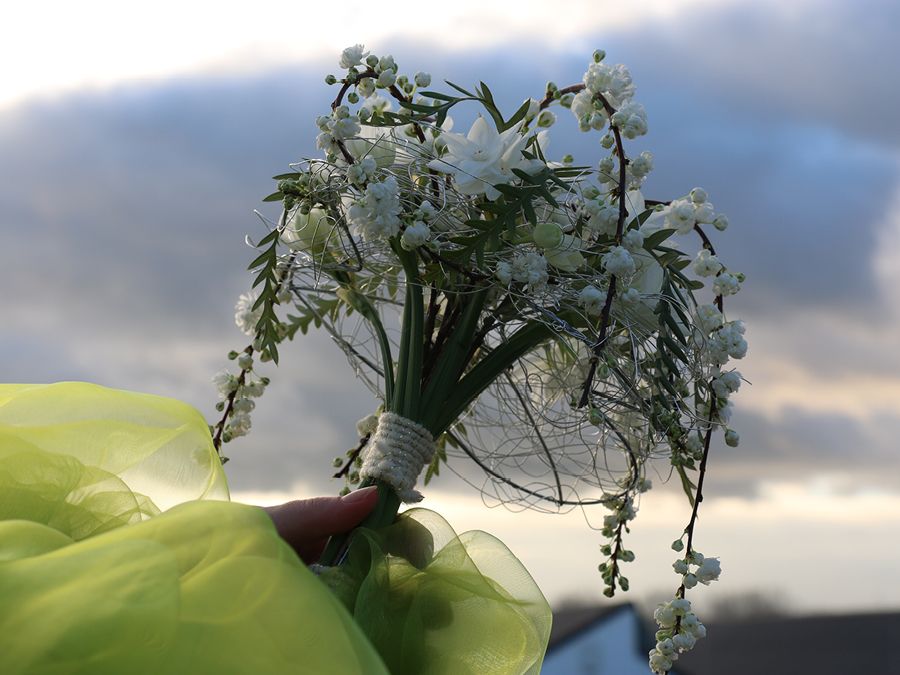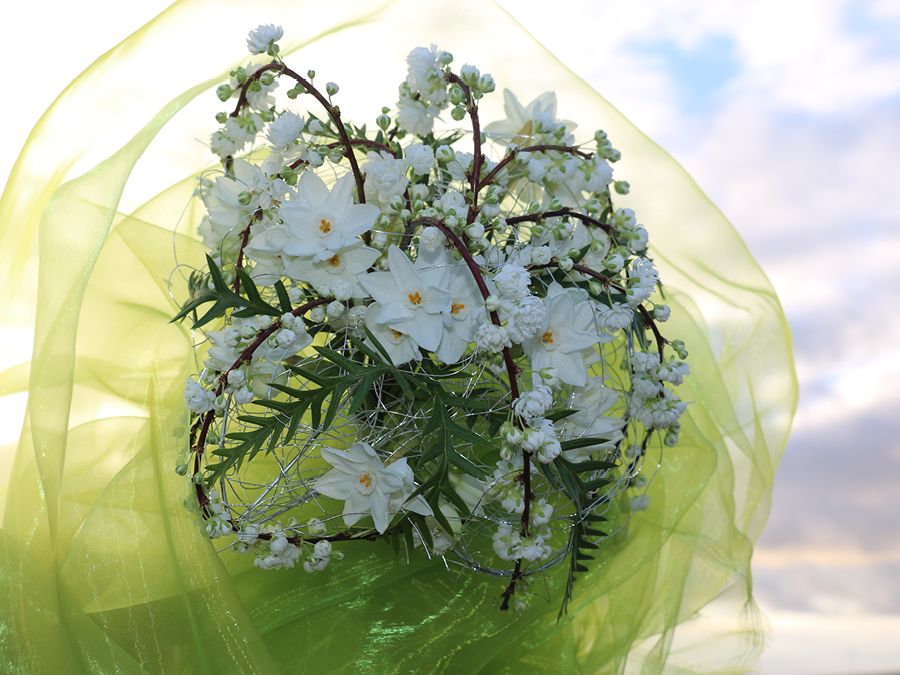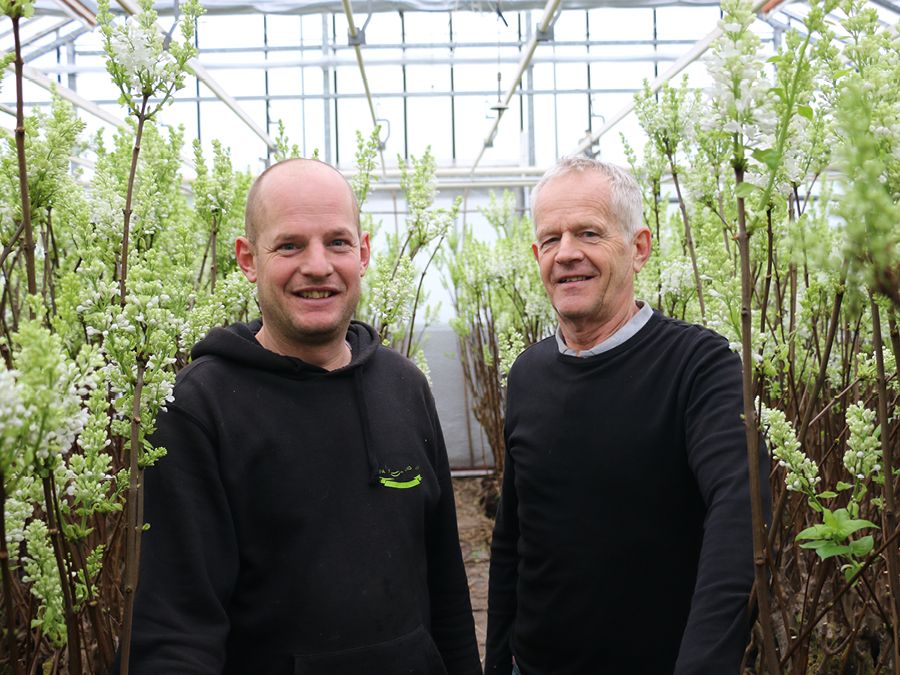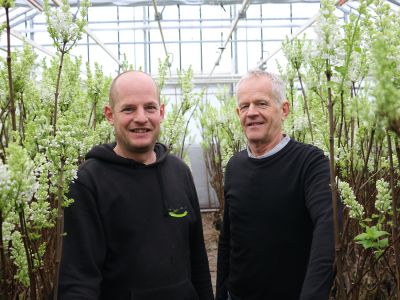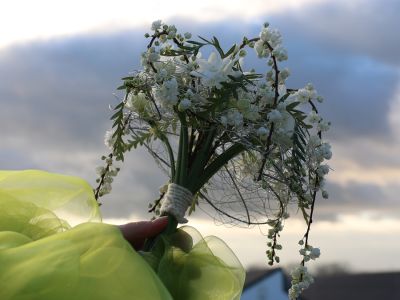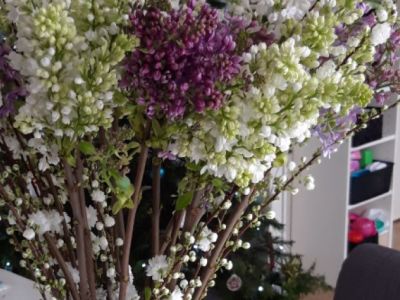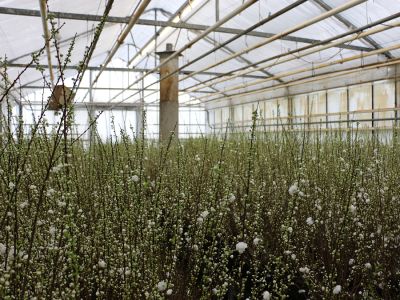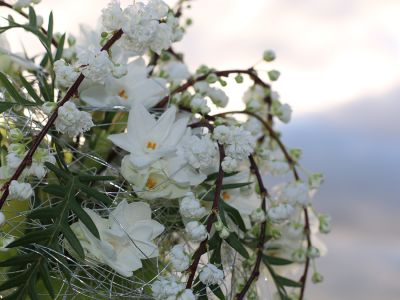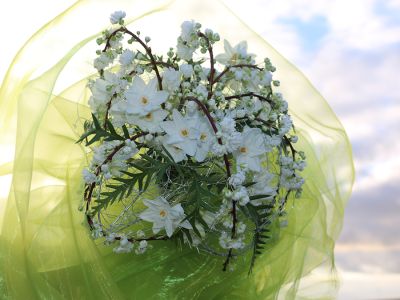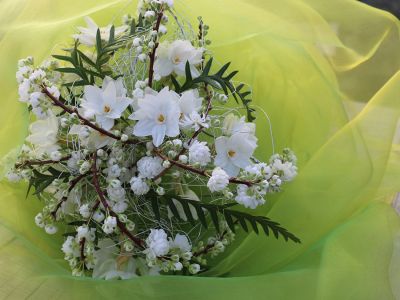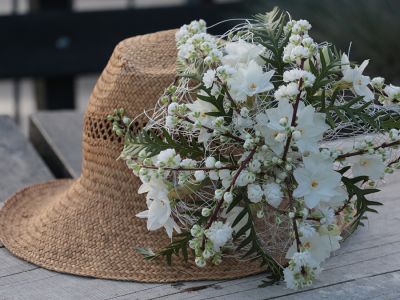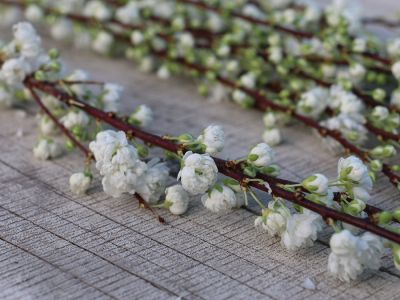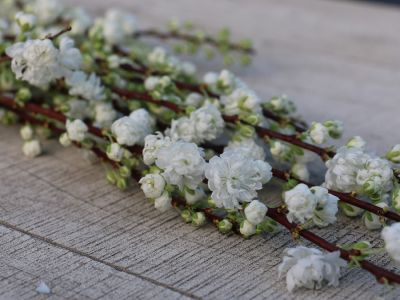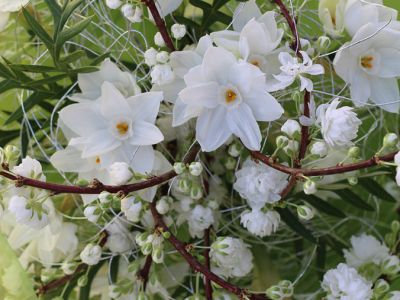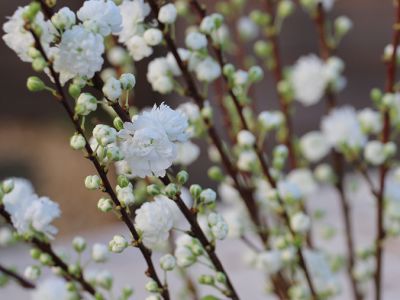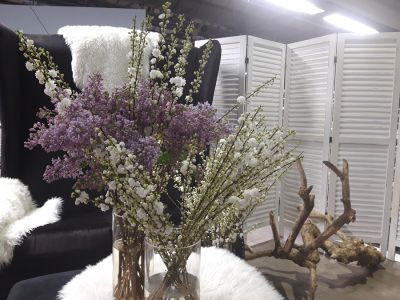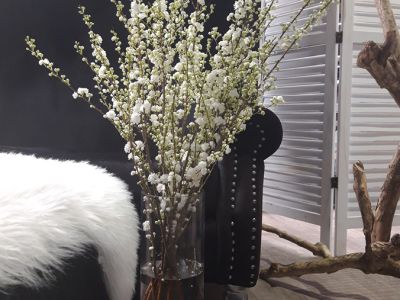Prunus Alba Plena
In the spotlights
We start the New Year with a real niche spring flower. In the Netherlands there are only three growers who supply this product. A ornamental shrub that with its fine blossom petals is a real eye catcher and certainly deserves a place in the FloraPodium spotlight. We are talking about the Prunus glandulosa Alba Plena, also known as 'White Almond'.
Unknown product
To find out more about this beautiful product, we visited nursery 'Firma D. Weening en Zonen', where we spoke to Frank. Frank co-owns the company with his parents. In addition to prunus, the company also grows lilacs. We have seen both products at the nursery. Both are cultivated and selected with care. Everything therefore looked tip-top.
The genus Prunus belongs to the Rose family: 'Rosaceae'. To Frank's surprise, there are few florists who know the Prunus glandulosa 'Alba Plena'. He sees that the trade decreases and thinks that this beautiful product deserves a helping hand. It is an elegant product that in itself is very beautiful in a vase, "but I prefer to see this crop in a vase with lilacs", says Frank, his two favorite products.
To our surprise, this kind of Prunus holds her blossom for a long time. After a week in the vase, no flowers had fallen off. At the moment the first flower falls, however, the rest follows quickly.
Origin
Why the flower is also called 'White Almond' was soon clear to us. After holding a few flowers in our hands, which we bruised heavily by rolling our palms together, the almond fragrance was quite pronounced. That is not surprising, because, besides being related to the Rose, the flower is also related to the Almond.
The Prunus originates in China and is cut from mid-December to the end of February. The later in the season, the more fragrance the flowers get. The blossom does not grow until mid-April. So the season is shortened by four months just like the Lilacs.
In the spring, the Prunus has heavily flowered branches with white flowers. Frank knows from his grandfather that it is also available in pink. Unfortunately, Frank has not yet been able to find this variety. His breeder is still looking for the product without success. It is, of course, quite expensive to travel the world in search of a new species, especially considering there is only limited demand, mostly around the Valentine period.
Care
For a long time there were problems with the cut flower food that was used for the Prunus. The old-fashioned universal Chrysal flower food was too strong and caused the stems to bun. The current Chrysal cut flower food is better, but best is to use Chrysal food for shrubbery. Unfortunately, this is not available for florists. At the moment they are often added to a bunch by the grower.
Another tip: do not put the flower in a ceramic vase; they often contain more bacteria. Always put them in a glass vase.

The cultivation
As a grower there are times when you finally think that you have mastered the cultivation. But they soon found this to be untrue when last year’s hot summer arrived in the Netherlands. The plants of Frank have also suffered damage.
Annual cultivation
The Prunus glandulosa Alba Plena is an annual cultivation of a perennial shrub. Many plants in the company are already 50 years old. In March, all remaining branches are cut off so that the plant can start to grow again. At the moment they are still no more than a rooted stems clod, resting on the nursery floor. April, the clods will be put in the ground. Then the soil will be warm enough and the plant can start to produce leaves. These leaves will fall off in October. The trunks are then brought back inside in groups, so that they can bloom in different periods.
Young plants
The youngest members of the company are the most beautiful! The young plants have a lot of vigor and therefore get fewer shoots that have many branches. These long branches are available from January onwards and they offer an impressive white splendor in the vase!
Riper cutting
Frank is a true perfectionist. Products are chosen with care and many conscious choices are made. For example, he also chooses to cut the branches in a more mature stage. This sometimes leads to some criticism from the market. Frank only cuts branches when several flowers are already open. This ensures a longer vase life and guarantees that all flowers will eventually open. He is aware that these branches are not suitable for the Asian market, but this is not a market he focuses on.
FloraPodium, 10 January 2019







